FORT LEWIS, Wash. - In the 1800s, it wouldn't have been unusual to see plumes of smoke fill the skies above the Fort Lewis prairies.
Historical accounts reveal that Native Americans periodically set fire to the prairies to help maintain a rich and diverse ecosystem, which they depended on for their survival.
"Fire was a very common tool among most of the native cultures," said Eric Rosenquist, a fire manager for The Nature Conservancy's North Dakota office.
"It's probably one of the things that shaped and maintained the prairie, too.
"For the last 100 years, natural fire has been largely absent," Rosenquist said. "Anytime there's a fire in the wild lands, the reaction is, 'We have to put it out.'"
As civilization rolled westward and fire suppression increased, prairies all but disappeared. Today, Fort Lewis is home to 12,000 acres of prairie - some of the largest and highest quality remaining in the region.
This year, Fort Lewis worked to maintain some it.
Fort Lewis Fish and Wildlife, Fort Lewis Forestry, Fort Lewis Fire Department, and The Nature Conservancy teamed up to reintroduce fire to the land to conserve the prairie habitat.
The partnership is a first for the agencies.
"TNC is very much into building partnerships with other agencies or private landowners and finding ways to work together towards a common goal," said Rosenquist, a TNC "Burn Boss."
On Sept. 15, Rosenquist and nine employees from the three Fort Lewis departments made their way to Training Area 13 to set fire to 174 acres as part of a prescribed burn. The crew filled torches with a 3-1 diesel-to-gasoline mixture and proceeded to set fire to the perimeter of the rectangular tract of land they called a "unit."
White and brown smoke soon filled the sky - slightly obscuring the sunlight. In just over an hour, the prairie turned from shades of brown to grayish black.
To some, the charred ground might appear unsightly, but according to Jim Lynch, a fish and wildlife biologist with the Fort Lewis Fish and Wildlife Department, burning is crucial to prairie revitalization.
"If we cannot use fire as a management tool in this ecosystem, then you're not really talking about prairie restoration," he said. "Fire is essential."
Lynch said he believes that fire is the first step in the restoration process because it helps eliminate invasive species such as Scotch broom, which, left unattended, quickly chokes out prairie life. Native prairie plants have adapted to respond positively to fire, he added.
The benefits to invasive species removal are two-fold, because Soldiers don't like training in Scotch broom, Lynch said.
According to Rosenquist, a three-year burn rotation is an ideal way to keep invasive species at bay. He said burning is a preferred control method to chemical use, which is more expensive, labor intensive, and potentially bad for the environment.
Burning the prairies also helps improve a nesting habitat for birds, including the Streaked Horned Lark. Due to a lack of prime habitat, the area's lark population is in decline.
"We have several nesting pair that utilize this area, and they depend on burns to maintain their nesting sites," Lynch told his crew.
To date, 17 prescribed burns on Fort Lewis have covered more than 1,500 acres. According to Fish and Wildlife, this year's accomplishments are a vast improvement over last year, when, due to limited manpower, only sporadic burning took place.
"We've brought so many more resources online that when situations come up, we're able to be more elastic and adapt to all these things that obviously come up during a burn season," Lynch said.
Lynch said the forestry crew has helped by bringing pertinent information on forest ecology to a controlled burn and the fire department has provided trained wildland firefighters with the additional benefit of being trained in medical response needed.
Rosenquist said the agencies are on the road to a long-term partnership.
"Just the fact that people are starting to work together and get to know each other will, hopefully, have some positive spin-offs down the road and will strengthen things overall," he said.
Ingrid Barrentine is a photojournalist working on Fort Lewis' Northwest Guardian.
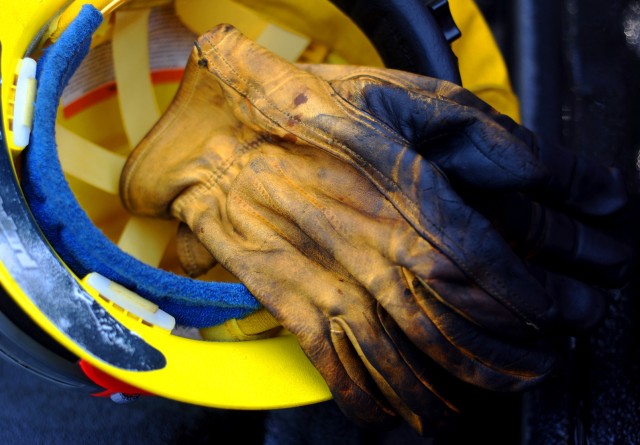

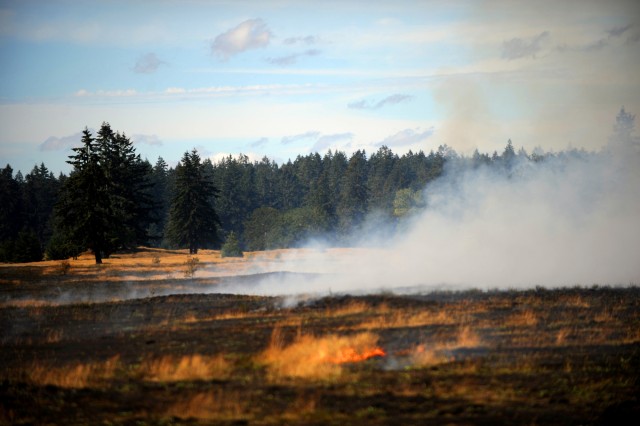



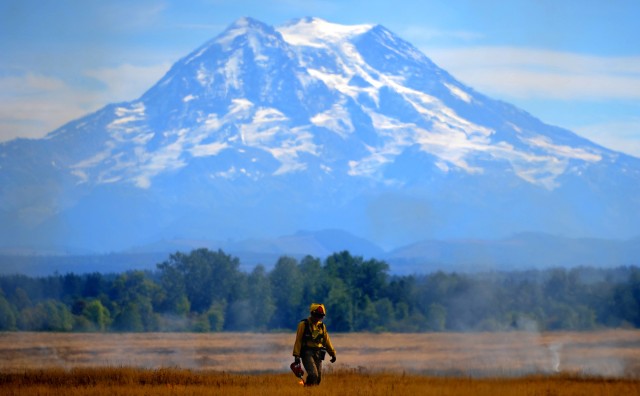
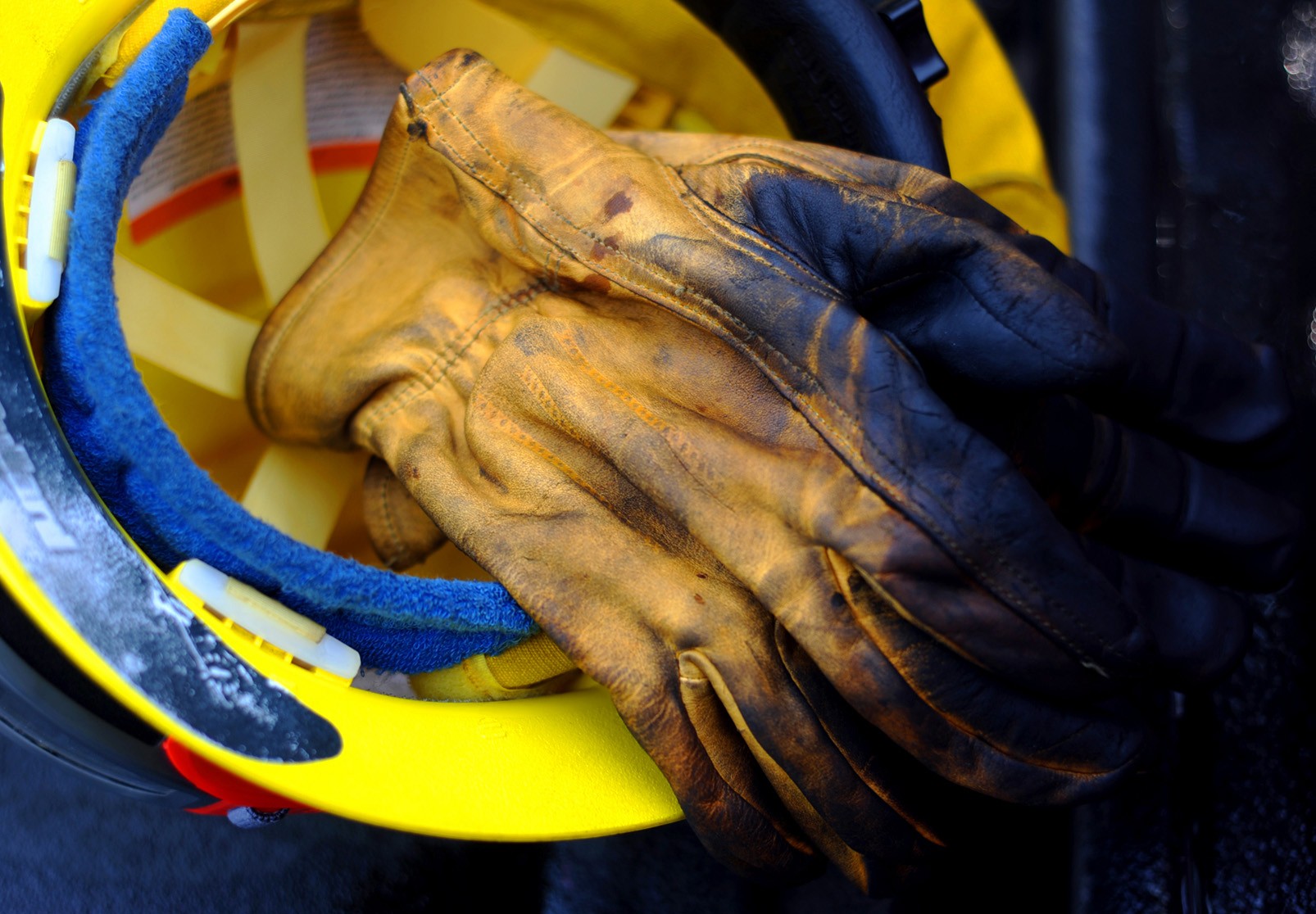

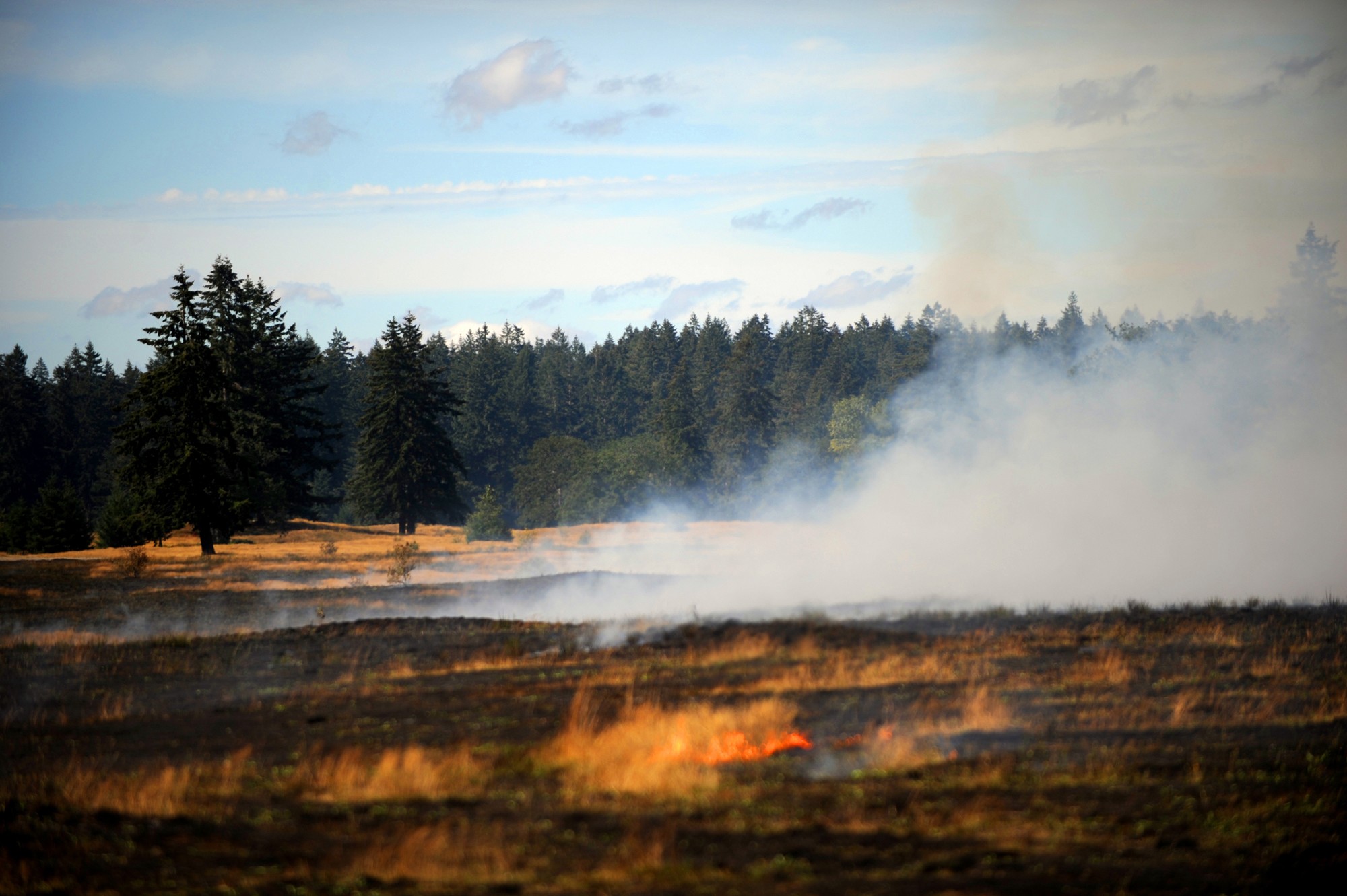

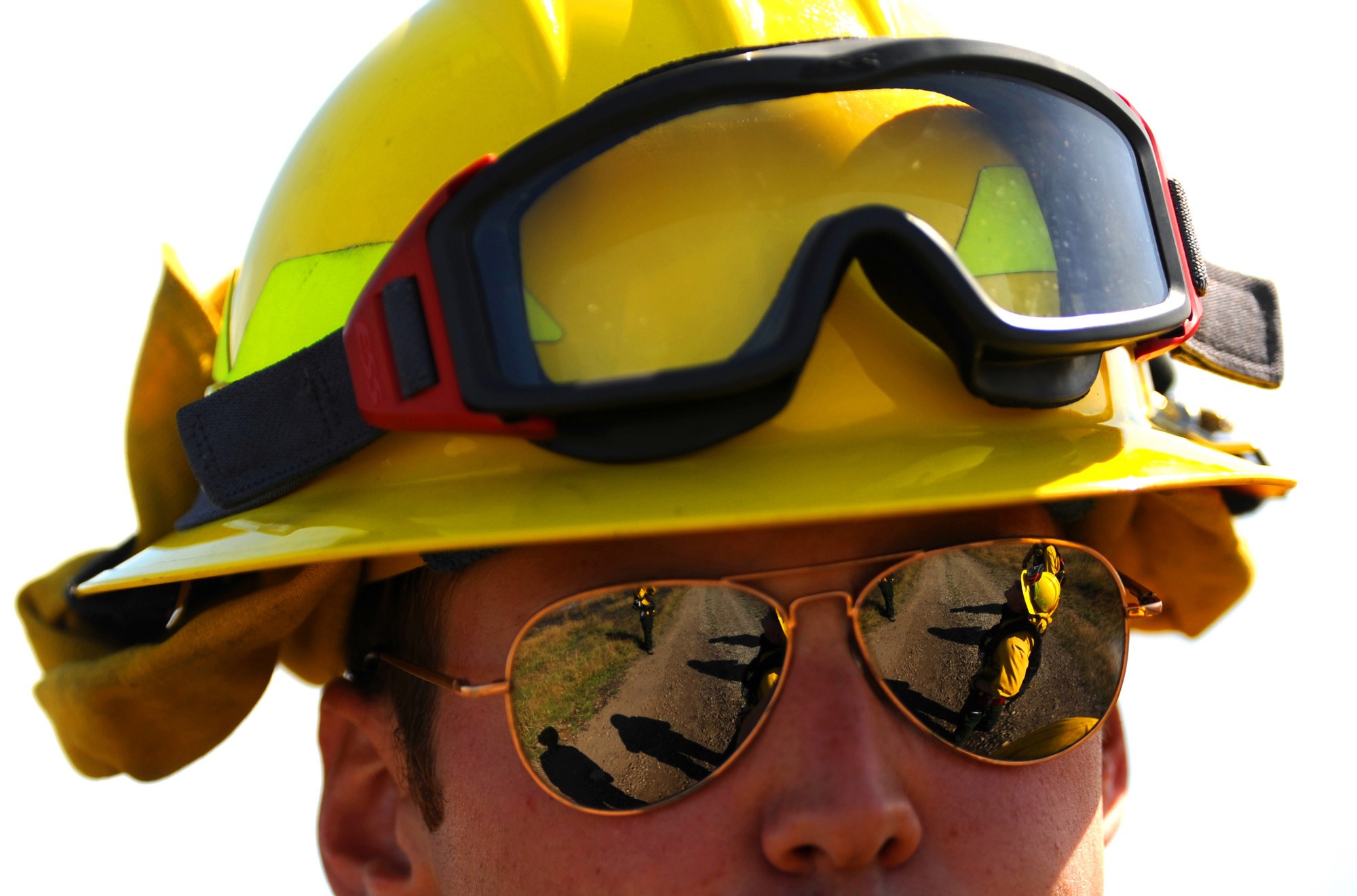
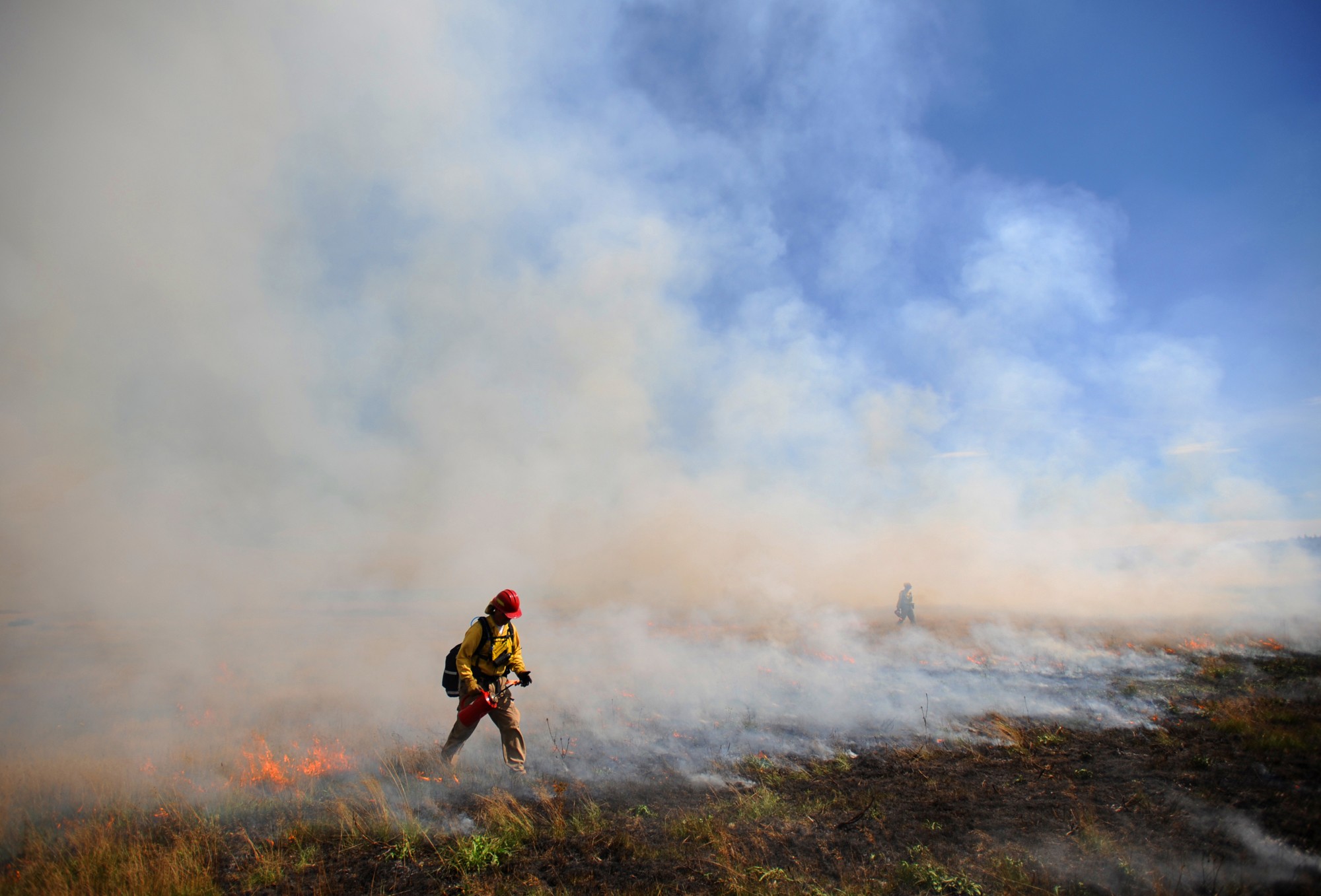

Social Sharing